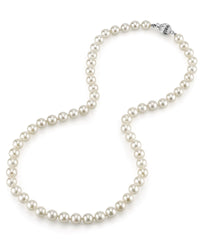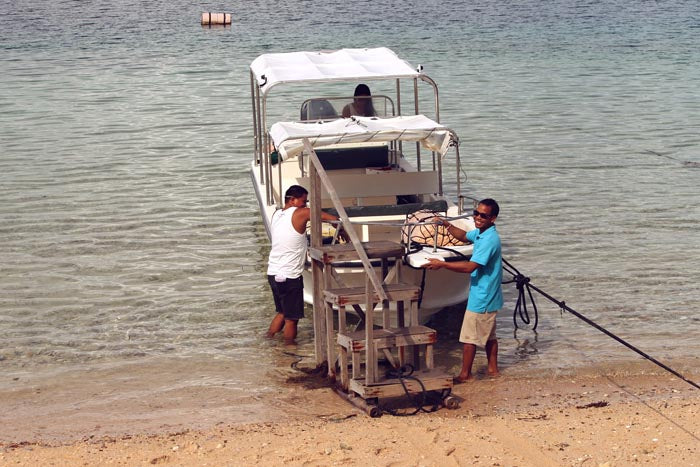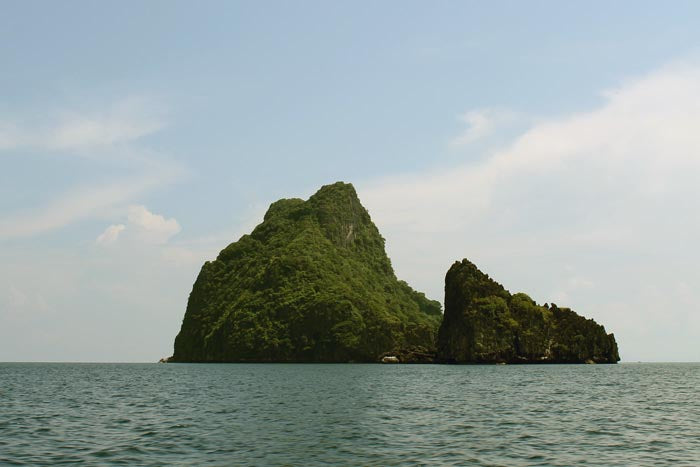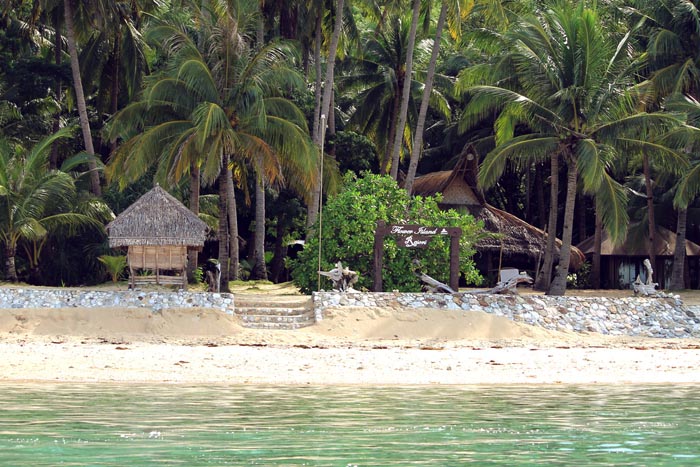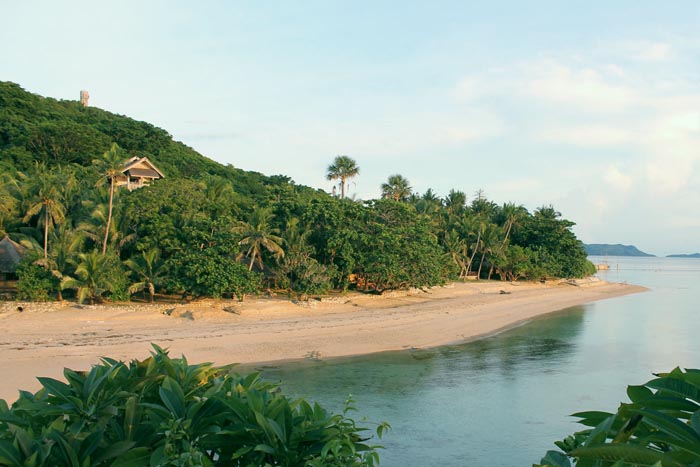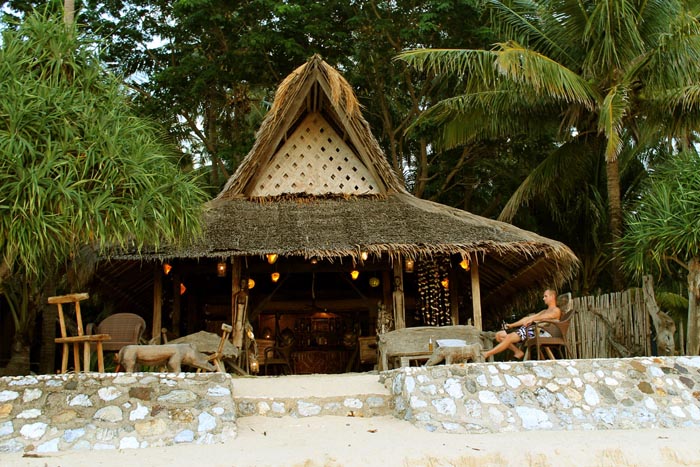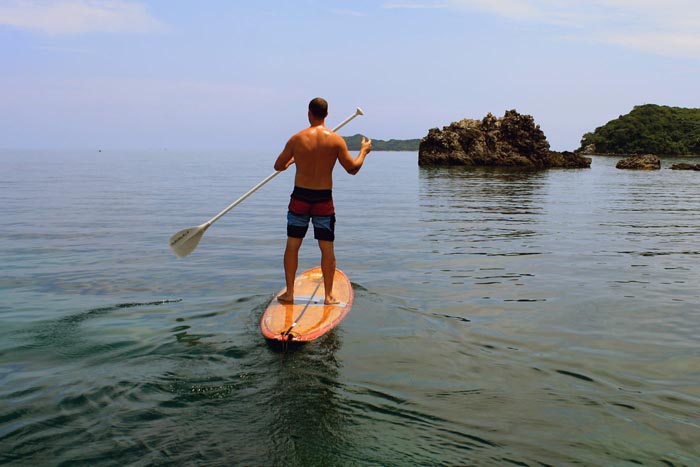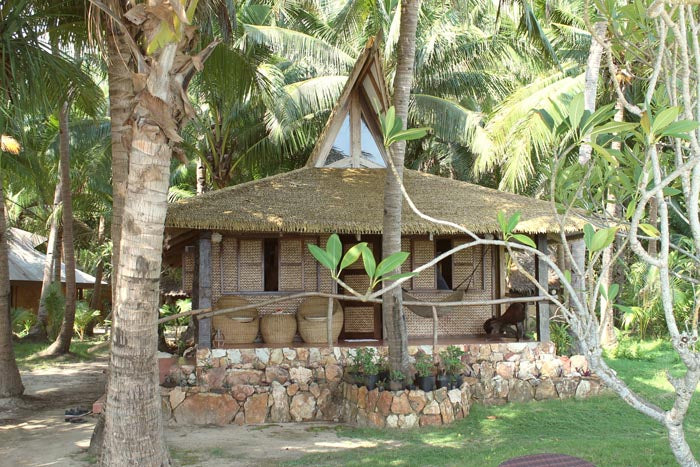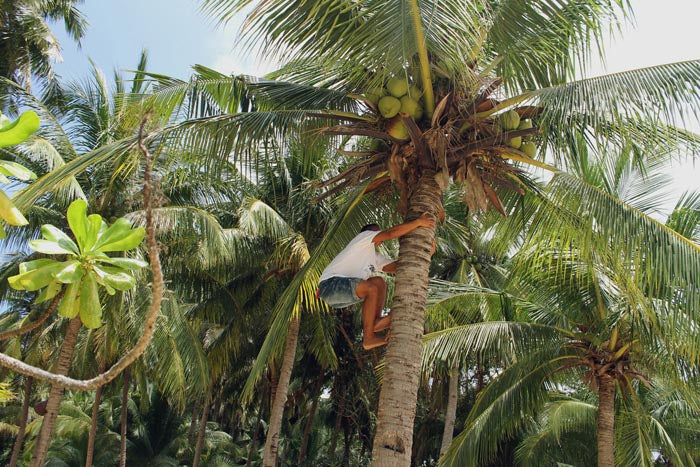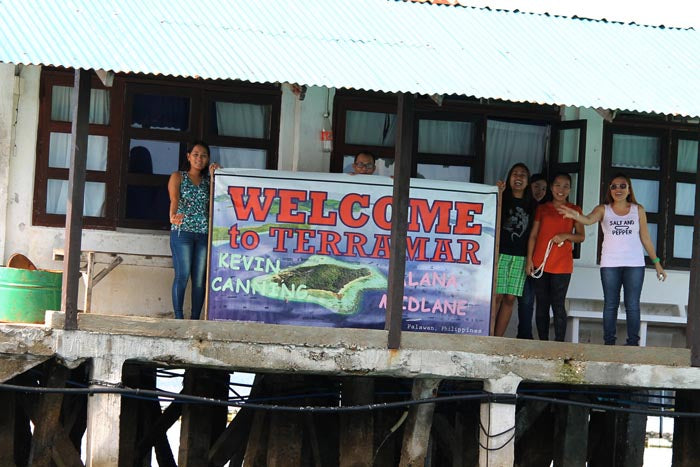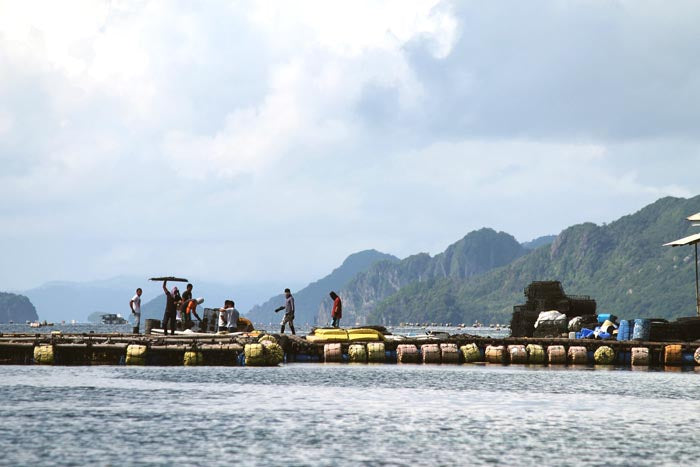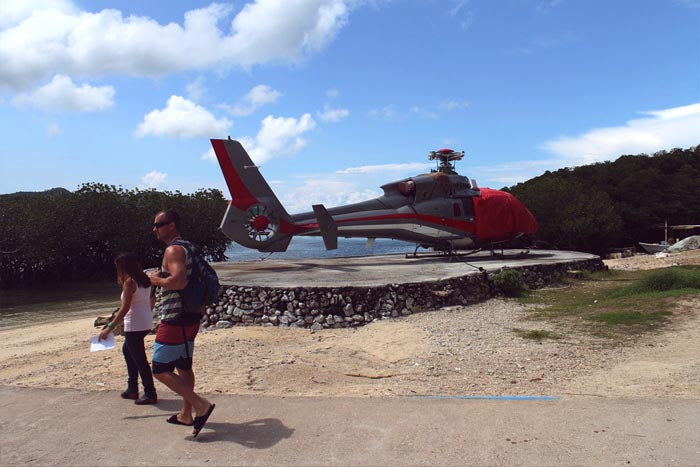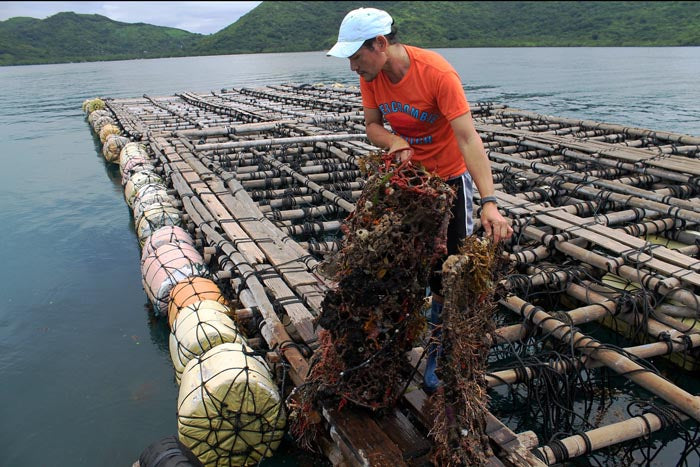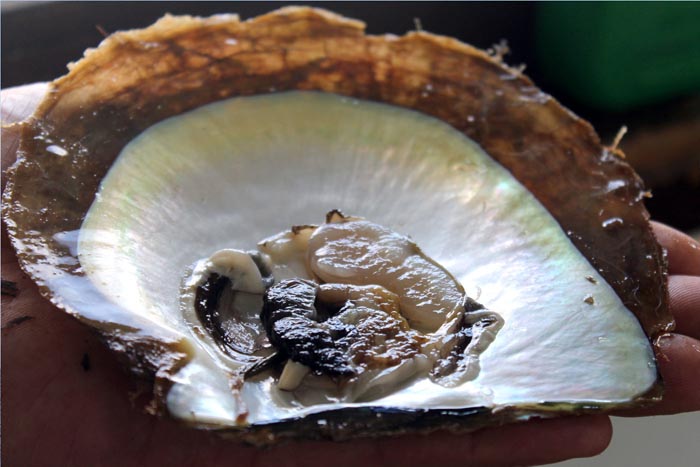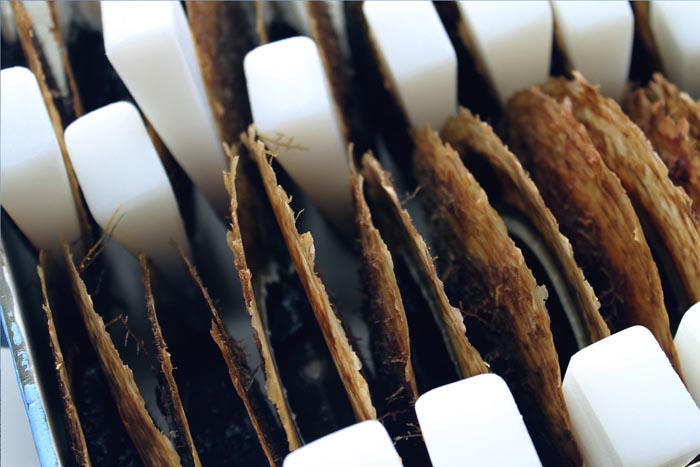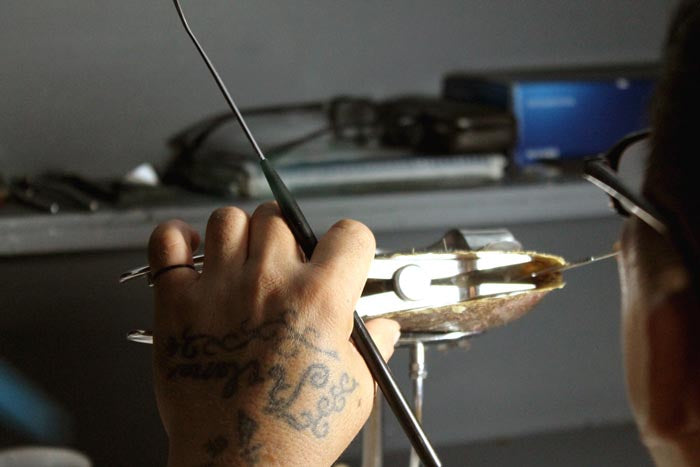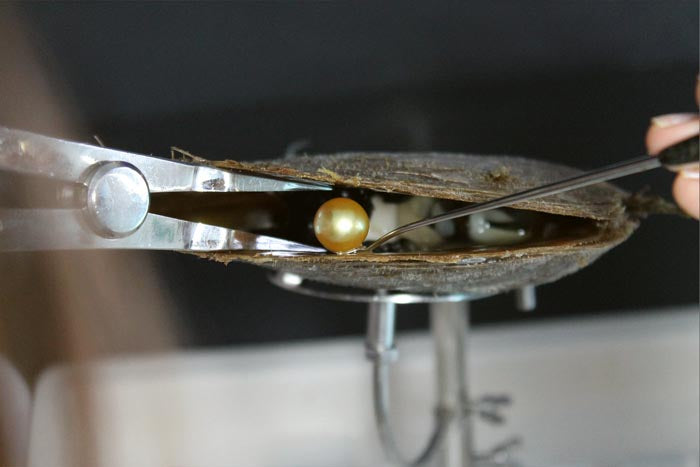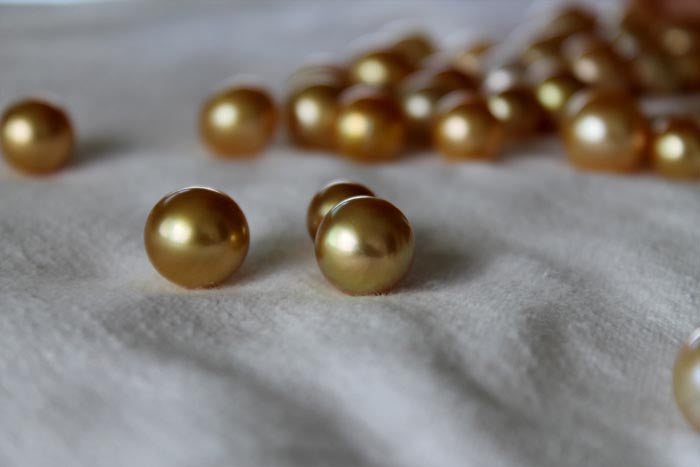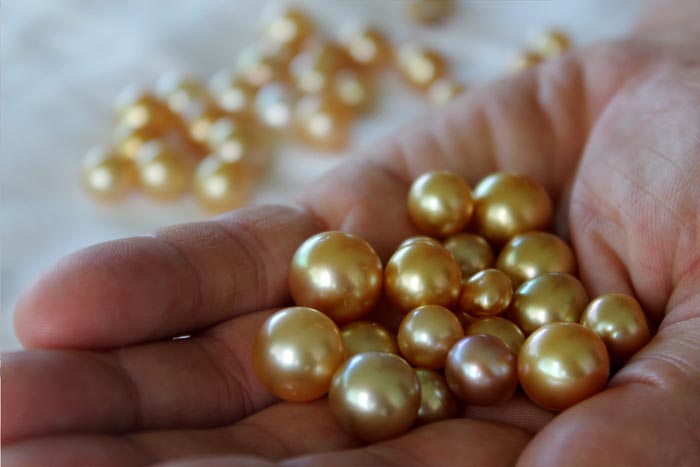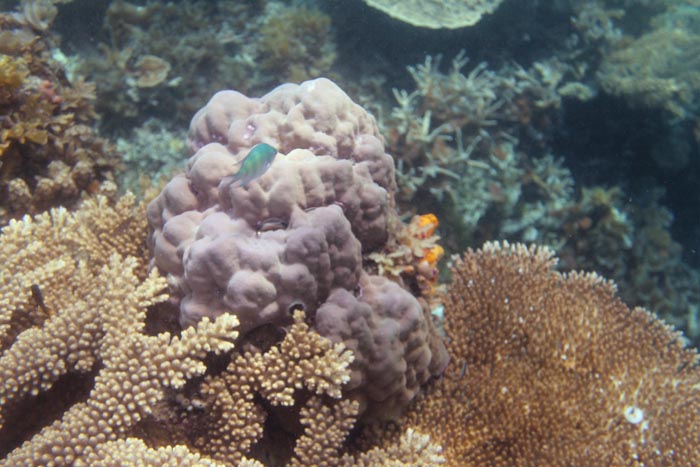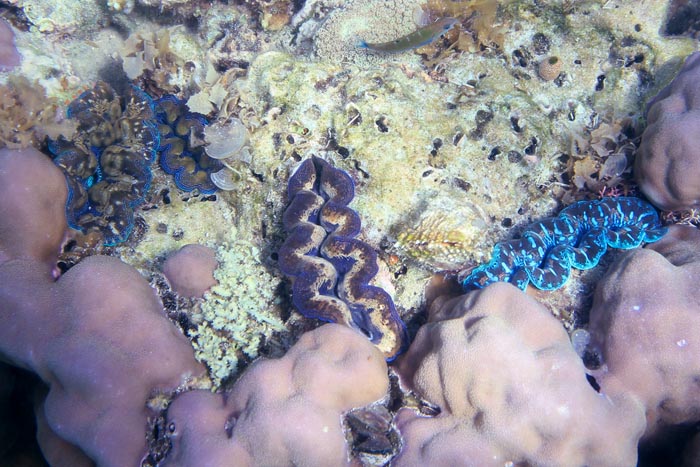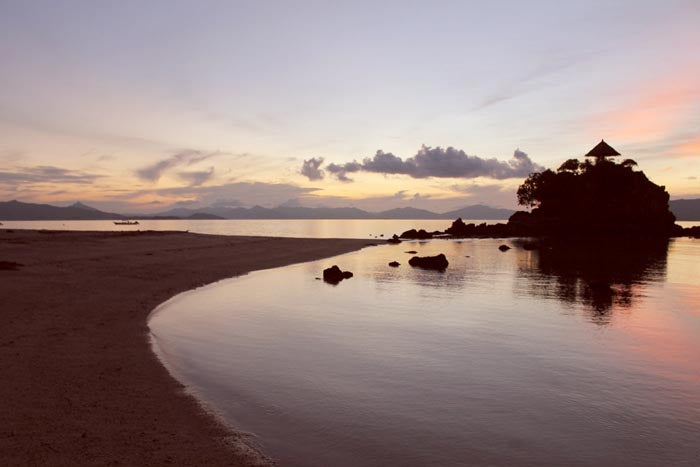Kevin and I have been back from Hong Kong and the Philippines for a while now but have been so busy preparing for Christmas, that unfortunately the blog has taken a back seat. While we were at the Hong Kong Gem Fair in September we had the pleasure of meeting with Jacques-Christophe Branellec at the Jewelmer booth. Jacque told us he liked what we were doing on Pearl Guide and the had seen some of the photos posted on the Pearls of Joy Blog. After talking for a while he invited us as his guests to the Jewelmer 35th Anniversary Gala in Manila and to visit one of their pearl farms near their
Flower Island resort.
The Gala was exceptional and a real treat to attend, for more on the gala read my full post
HERE. The day after the gala we flew to Puerto Princesa on Palawan Island and made our way to the north end of the island, to catch a small boat that Flower Island sent to pick us up.
After passing by dozens of uninhabited islands, beautiful cliffs and crystal clear water we pulled up to a warm welcome at Flower Island. The staff all came out to welcome us with huge smiles and cold drinks! Setting foot on the island truly took my breath away. Kevin and I have been to some spectacular islands around the world but Flower Island takes the cake. The locals know what a treasure they have and take care of it as such, everything was pristine. I really can't say enough about how well we were treated.
As luck would have it, we were the only guests on the entire island! We were completely spoiled. We stayed in a beautiful beach front cottage nestled between palm trees with a gorgeous healthy reef steps from our door constantly calling us into the water.
Kevin and I also took advantage of the stand up paddleboards with a cruise around the island each morning to work up an appetite for breakfast. Delicious meals were prepared for us three times a day using local ingredients and recipes -- including one dinner that featured "pearl meat".
On the second day in paradise some of the staff loaded us on the boat and zipped us off to one of the peal farms. It was another warm welcome as our boat was pulling up. They were all waving at us with a big sign that they had printed our names on. What really struck me was how beautiful the area surrounding the pearl farm was, this tiny island could easily double as a resort destination.
We toured the whole operation and I was amazed at how many steps are involved from beginning to end in creating a pearl. I walked away with a new appreciation for the science and art behind producing beautiful pearls. There's a lot more to it then just putting a bead in an oyster and hoping for the best!
The farm was strict in preserving it's proprietary practices so a lot of areas including the hatchery were off limits to photography. The hatchery was where all the spat (baby oysters) begin their life-cycle and are bred from oysters selected for their potential to create beautiful pearls. While mother nature is still in charge, nothing is left to chance and they are constantly experimenting with new breeding techniques.
These baby Pinctada maxima oysters are then placed in the nursery where they stay for about two years. Once they have matured they are transferred to tanks and prepared to be grafted with a mother of pearl bead. The grafters take a piece of mantle tissue along with the bead and place it inside the oyster’s gonad. It was fascinating to watch the grafters operate on these little oysters. The skill and precision it takes to cut into the right part of the oyster to place the bead and mantle tissue without harming the oyster is truly an art.
A few months following nucleation, the oyster goes through an x-ray machine to ensure it has recovered from its surgery and the nucleus wasn’t rejected. Providing the nucleus is in the correct location the oyster is placed into small cages attached to lines to be dropped into the ocean for approximately two years. The staff, then carefully continue to monitor the many factors that affect pearl quality. They measure for things such as water temperature, water height, rainfall, salinity, and phytoplankton (oyster food!). Boats of workers go out each day to clean and adjust the heights of the lines to ensure the oysters are in the optimal condition for growing beautiful pearls. When the conditions are perfect and the implanted oysters have spent enough time in the water they do a small sample harvest. If they like what they see they will do a full harvest, if something is not right they will adjust the lines and give them more time in the water. Fortunately for us we were there as they were doing a pre-harvest sampling. As if on queue the first oyster yielded a beautiful perfectly round pearl with fantastic golden colors - something Jewelmer is famous for.
After the farm tour we were invited to snorkel around the farm and view the pristine underwater world necessary to grow world class pearls. Normally in aquaculture you see a dead sea floor, one covered in waste products and certainly not beneficial for the environment. But a pearl farm is different, a pearl farm requires pristine growing conditions and below the surface of the Jewelmer farm was teeming with colorful fish and bright vibrant coral gardens.
With the pearl farm tour complete we opted to spend our last precious days in paradise simply lazying around and unwinding from a busy buying trip. The only downside was when it was time to leave, as "post vacation depression" is a serious hazard when leaving the Philippines. As we left the island Kevin and I both gave each other a look like "we gotta come back" and I'm sure we will soon.
